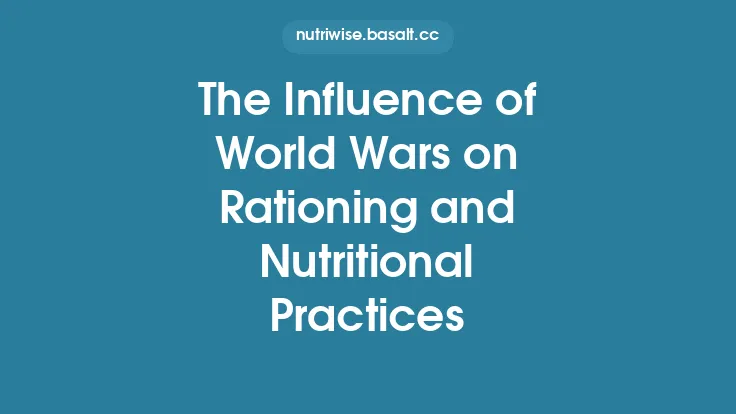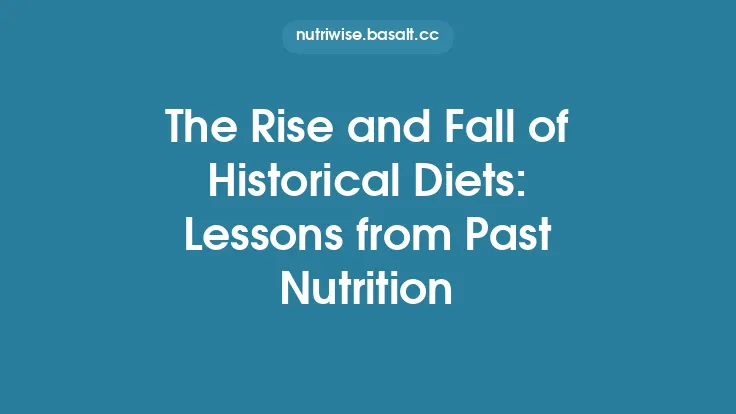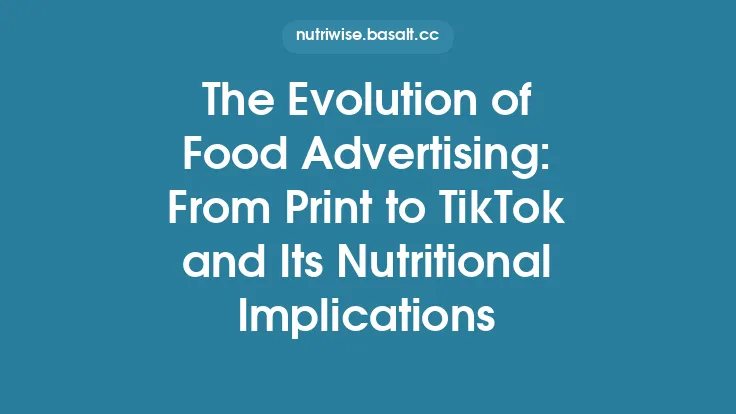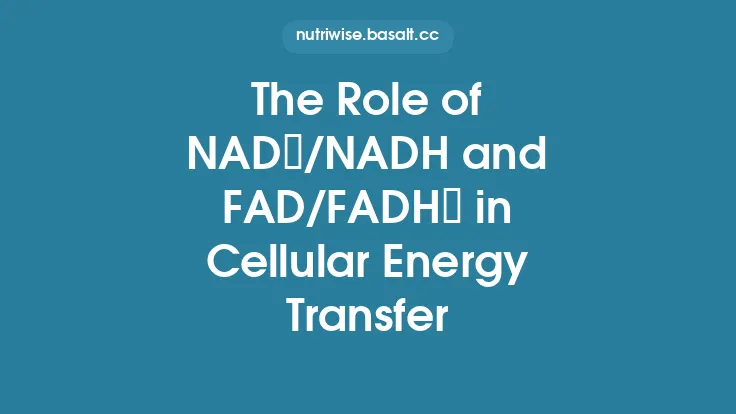Religious fasting has been practiced for millennia, shaping the dietary rhythms of countless communities around the world. While the spiritual motivations differ—from penitence and purification to commemoration and solidarity—the physiological challenges posed by abstaining from food (and sometimes drink) are remarkably similar. Understanding the nutritional foundations that underlie these practices is essential not only for preserving cultural heritage but also for safeguarding the health of participants, especially as modern lifestyles intersect with ancient rituals.
Historical Context of Religious Fasting
Across continents, major faith traditions have codified periods of abstinence that range from a single sunrise to several consecutive days. In Judaism, the fast of Yom Kippur lasts approximately 25 hours, whereas the Islamic month of Ramadan involves daily dawn‑to‑dusk abstention for roughly 30 days. Hinduism prescribes intermittent fasts such as Ekadashi, which may last 12–24 hours, while the Eastern Orthodox Church observes multiple multi‑day fasts, often with strict restrictions on animal products.
These traditions emerged in agrarian societies where seasonal scarcity naturally imposed periods of limited intake. Over time, ritualized fasting became a symbolic reenactment of those hardships, embedding nutritional stressors within a spiritual framework. Recognizing this historical backdrop helps explain why many fasting protocols are aligned with lunar or solar cycles, agricultural calendars, and communal feasting events that follow the fast.
Physiological Basis of Prolonged Abstinence
When food intake is curtailed, the body undergoes a predictable cascade of metabolic adaptations:
- Glycogen Depletion (0–12 h) – Liver glycogen stores sustain blood glucose. As glycogen wanes, gluconeogenesis begins, drawing on amino acids and glycerol.
- Shift to Lipolysis (12–24 h) – Hormone‑sensitive lipase mobilizes triglycerides from adipose tissue, releasing free fatty acids (FFAs) and glycerol. The liver converts FFAs into ketone bodies (β‑hydroxybutyrate, acetoacetate) for cerebral and muscular fuel.
- Protein Sparing (24–48 h) – Elevated ketone levels reduce the need for gluconeogenic amino acids, preserving lean tissue. However, prolonged fasting (>48 h) can still lead to muscle catabolism, especially in the absence of adequate refeeding.
- Hormonal Modulation – Insulin declines, glucagon rises, and cortisol may increase to maintain glucose homeostasis. Thyroid hormone conversion (T4 → T3) slows, reducing basal metabolic rate.
These mechanisms are largely conserved across individuals, but the rate and extent of each phase depend on baseline glycogen stores, body composition, age, sex, and prior nutritional status. Understanding these phases is crucial for designing refeeding strategies that align with the body’s metabolic state at the end of a fast.
Macronutrient Considerations During the Fast
While many religious fasts prohibit solid foods entirely, some allow limited intake (e.g., broth, dates, or dairy). The macronutrient profile of permissible items can influence the depth of metabolic shift:
- Carbohydrates – Even modest carbohydrate consumption (≤30 g) can sustain hepatic glycogen, delaying ketosis. In fasts where a small amount of fruit or sweetened beverage is allowed, participants may experience a blunted ketotic response, which can affect the intended spiritual experience of “detachment.”
- Proteins – Protein‑rich allowances (e.g., dairy, legumes) provide essential amino acids, mitigating muscle loss but also sustaining gluconeogenesis. Some traditions limit protein to preserve the symbolic aspect of self‑denial.
- Fats – High‑fat allowances (e.g., nuts, ghee) can supply energy without triggering insulin spikes, supporting a smoother transition into ketosis. However, excessive fat intake may cause gastrointestinal discomfort during a period of reduced motility.
When designing or advising on a fasting protocol, it is helpful to map the permitted macronutrients against the desired metabolic endpoint (e.g., full ketosis vs. mild caloric restriction). This alignment ensures that the spiritual intent is not inadvertently compromised by unintended nutritional effects.
Micronutrient Management and Supplementation
Extended abstinence can jeopardize micronutrient status, particularly for vitamins and minerals that are not stored in large reserves:
| Micronutrient | Primary Stores | Risk During Fast | Practical Mitigation |
|---|---|---|---|
| Vitamin B12 | Liver | Depletion after weeks | Small animal‑product allowance or fortified liquids |
| Vitamin C | Extracellular fluid | Oxidative stress increase | Citrus or vitamin C‑rich broth (if permitted) |
| Sodium & Potassium | Extracellular fluid | Electrolyte imbalance | Lightly salted water or electrolyte solutions (if ritual permits) |
| Magnesium | Bone, muscle | Muscle cramps, arrhythmias | Magnesium‑rich herbal teas (e.g., nettle) where allowed |
| Iron | Ferritin, hemoglobin | Anemia risk in women | Iron‑fortified liquids or modest meat portions in permissive fasts |
In many traditions, the fast is broken with a specific food that historically supplied these nutrients (e.g., dates at the end of Ramadan provide potassium, magnesium, and quick‑acting glucose). Modern practitioners can supplement these nutrients in a manner consistent with the ritual’s spirit—using fortified beverages or small, nutrient‑dense portions that respect the prescribed limits.
Refeeding Strategies: From Break‑Fast to Sustained Nutrition
The transition from a fasted to a fed state is metabolically delicate. An abrupt influx of large, high‑glycemic meals can precipitate refeeding syndrome—a potentially fatal shift in fluids and electrolytes. While classic refeeding syndrome is most common after prolonged starvation, even religious fasts of 24–48 hours can trigger milder disturbances in susceptible individuals (e.g., the elderly, those with chronic illnesses).
Stepwise Refeeding Protocol (General Guideline)
- Phase 1 – Immediate Break‑Fast (0–2 h)
- Goal: Stabilize blood glucose, replenish fluids, and provide gentle electrolytes.
- Typical Foods: 1–2 dates, a small glass of water with a pinch of salt, or a light broth.
- Portion Size: ≤100 kcal, low in fat, moderate in simple carbohydrates.
- Phase 2 – Early Refeeding (2–6 h)
- Goal: Introduce complex carbohydrates and modest protein without overwhelming the digestive system.
- Typical Foods: Whole‑grain porridge with a drizzle of honey, lentil soup, or a small serving of yogurt.
- Portion Size: 200–300 kcal, balanced macronutrients (≈50 % carbs, 30 % protein, 20 % fat).
- Phase 3 – Consolidation (6–24 h)
- Goal: Expand caloric intake to meet daily needs, re‑establish regular meal patterns.
- Typical Foods: Balanced plate with lean protein (e.g., grilled fish or poultry), vegetables, and a modest portion of whole grains or starchy vegetables.
- Portion Size: 500–800 kcal, ensuring adequate micronutrient density.
- Phase 4 – Maintenance (24 h onward)
- Goal: Return to habitual diet while preserving any health benefits accrued during the fast (e.g., improved insulin sensitivity).
- Guidance: Emphasize whole foods, limit processed sugars, and maintain adequate hydration.
Adjustments should be made for specific religious guidelines (e.g., avoidance of pork in Islamic or Jewish contexts) and individual health status. For participants with diabetes, a more cautious carbohydrate reintroduction is advisable, often under medical supervision.
Cultural Variations in Refeeding Practices
The foods chosen to break a fast are deeply symbolic and vary widely:
- Ramadan (Islamic) – Dates and water are traditional, reflecting the Prophet Muhammad’s practice. Dates supply rapid glucose, potassium, and magnesium, while water restores hydration.
- Yom Kippur (Jewish) – A light dairy meal (e.g., cheese blintzes) is common, providing protein and calcium without heavy fats.
- Ekadashi (Hindu) – After a day of abstention, many consume a simple fruit salad or a bowl of rice with ghee, balancing carbohydrates and a modest fat source.
- Great Lent (Eastern Orthodox) – The “break‑fast” often includes a broth with barley and a small piece of fish, aligning with the fast’s restriction on meat while offering essential omega‑3 fatty acids.
These choices are not arbitrary; they reflect centuries of empirical observation about what foods restore energy without causing digestive distress after prolonged abstinence. Modern nutrition science validates many of these selections, highlighting their role in safely re‑establishing metabolic equilibrium.
Health Screening and Contraindications
While religious fasting is generally safe for healthy adults, certain populations should approach it with caution:
- Pregnant or lactating women – Increased caloric and micronutrient demands make prolonged abstinence risky.
- Individuals with chronic kidney disease – Fluid and electrolyte restrictions may exacerbate renal stress.
- People with uncontrolled diabetes – Risk of hypoglycemia during the fast and hyperglycemia during refeeding.
- Elderly individuals – Reduced physiological reserves increase susceptibility to electrolyte shifts and muscle loss.
- Those on certain medications – For example, insulin, sulfonylureas, or diuretics may require dose adjustments.
Pre‑fast medical evaluation, ideally with a healthcare professional familiar with both the religious practice and the individual’s health profile, can identify contraindications and tailor recommendations (e.g., shortened fast duration, modified refeeding plan).
Modern Adaptations and Clinical Guidance
In contemporary societies, many adherents incorporate fasting into busy schedules, travel, or work environments. This has led to several practical adaptations:
- Partial Fasts – Allowing limited caloric intake (e.g., 200–300 kcal) during the day while maintaining the spirit of abstention.
- Hydration Strategies – Consuming electrolyte‑enhanced water during permitted periods to mitigate dehydration, especially in hot climates.
- Supplemental Micronutrients – Using chewable vitamin tablets that are permissible under the specific religious rulings (e.g., non‑gelatin capsules for certain faiths).
- Digital Monitoring – Wearable devices that track heart rate variability and glucose trends can help participants stay within safe physiological ranges.
Healthcare providers can support these adaptations by offering evidence‑based counsel that respects religious observance while ensuring nutritional adequacy. Collaborative care models—where clergy, dietitians, and physicians communicate—have shown improved outcomes in fasting populations.
Future Directions in Research
Despite a rich historical record, scientific investigation into the nutritional nuances of religious fasting remains fragmented. Emerging research avenues include:
- Metabolomic Profiling – Mapping the specific metabolites that rise and fall during different fasting lengths across diverse cultural practices.
- Gut Microbiome Dynamics – Understanding how periodic abstinence reshapes microbial communities and whether these changes confer long‑term health benefits.
- Epigenetic Effects – Exploring whether cyclic fasting influences gene expression related to inflammation, insulin signaling, and longevity.
- Personalized Refeeding Algorithms – Leveraging machine learning to predict optimal refeeding composition based on individual baseline data (age, BMI, metabolic markers).
Such studies will deepen our comprehension of how ritualistic fasting can be harmonized with modern nutritional science, preserving cultural integrity while promoting health.
In sum, the nutritional foundations of religious fasting and refeeding are a tapestry woven from metabolic physiology, micronutrient stewardship, cultural tradition, and contemporary health considerations. By grounding ritual practice in sound nutritional principles, communities can honor their spiritual heritage while safeguarding the well‑being of each participant—ensuring that the fast remains a source of both devotion and vitality.





